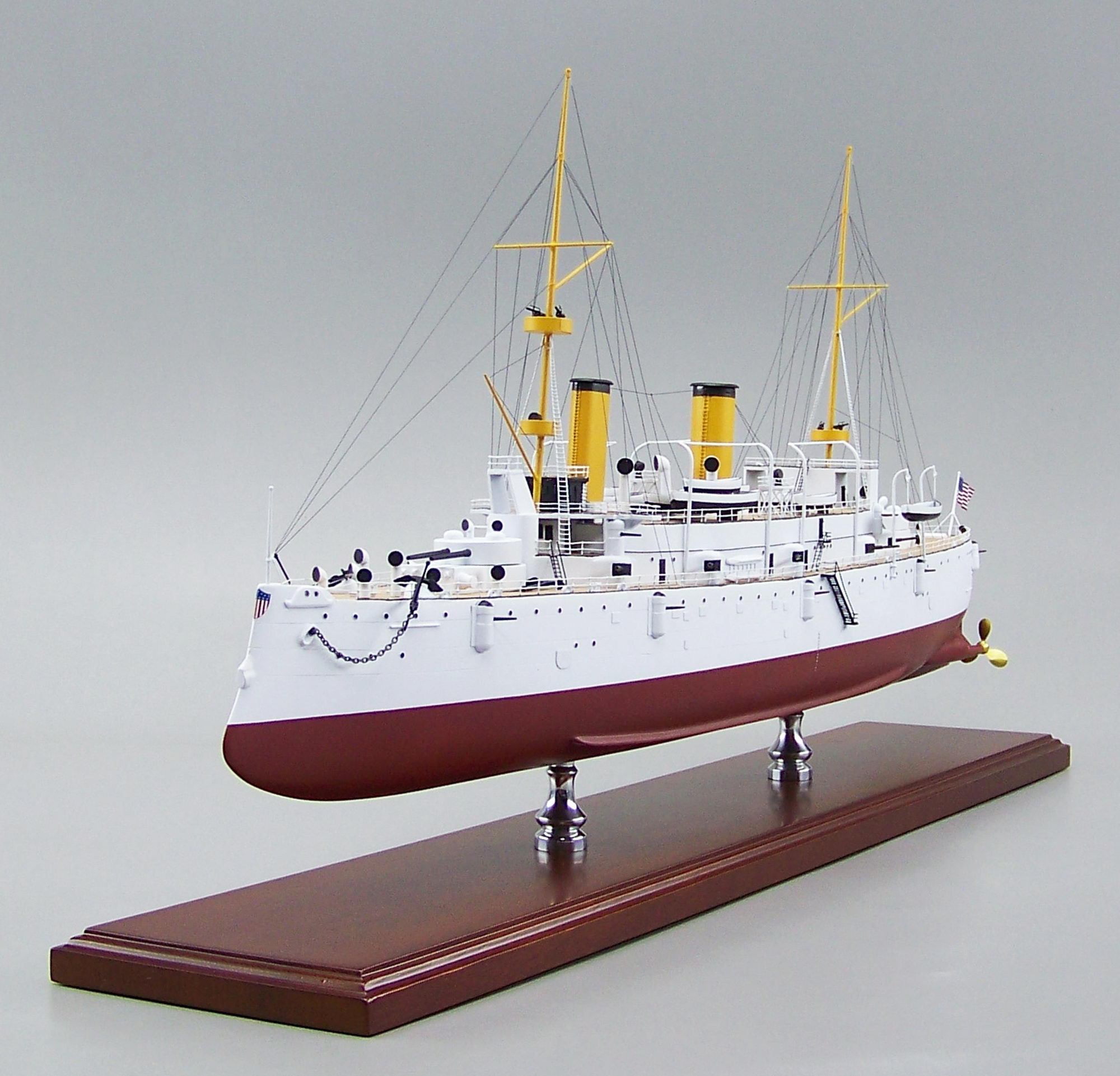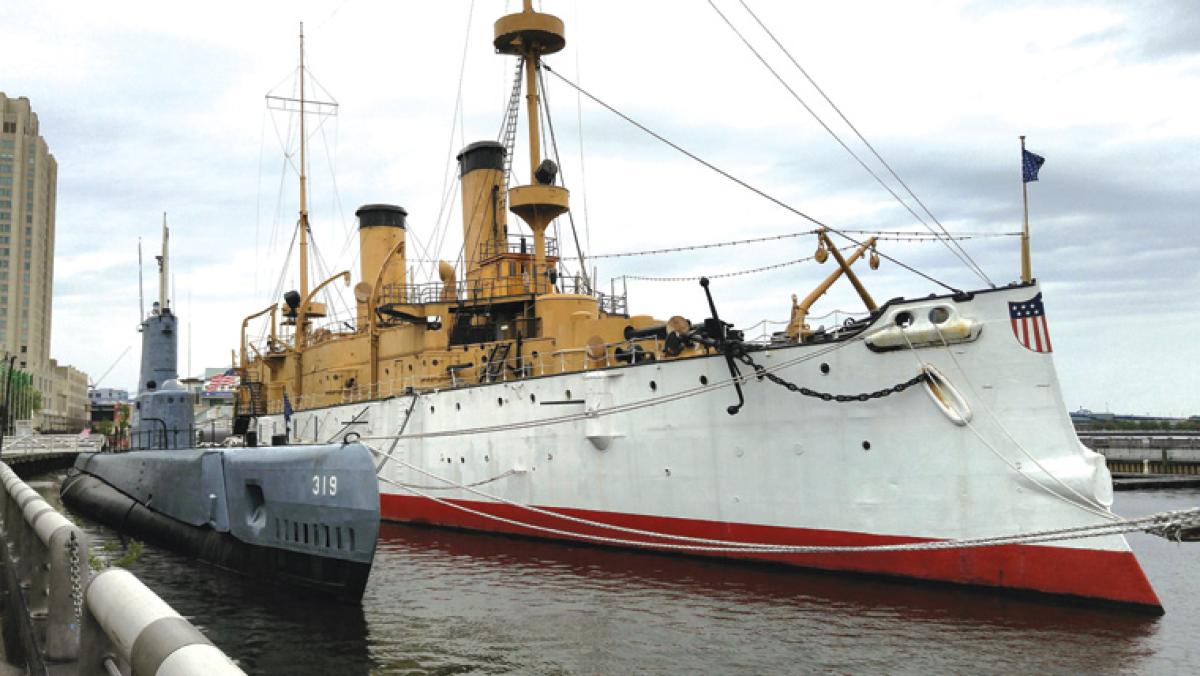Uss Olympia Photos - The USS Olympia was a unique United States Navy armored cruiser that served from 1895 to 1922. The ship saw action in the Spanish–American War and World War I.
On June 17, 1891, the crucifixion in Olympia took place. Olympia was built at the Union Iron Works shipyard in San Francisco and launched on November 5, 1892. On February 5, 1895, the ship entered service.
Uss Olympia Photos

At the outbreak of the Spanish–American War in 1898, Olympia, then based in Hong Kong, was sent to the Philippines under the command of US Navy Admiral George Dewey. Here the ship was instrumental in destroying the Spanish fleet. Due to the closeness between the crew and the captain, Dewey knew his fire control had arbitrary power to decide when to fire, allowing Dewey to concentrate on maneuvering the ship and directing the fleet. Because of this, the fight is particularly effective. Besides the sinking of some ships of the Spanish fleet, some coastal batteries were also destroyed.
Uss Olympia Attraction Reviews
The ship returned to America in September 1899. From 1902 to 1906, USS Olympia served in the Atlantic, Caribbean and Mediterranean seas. She also served as a training and training ship for the United States Naval Academy. The old battleship was a barracks ship in Charleston from 1912 to 1916.
The USS Olympia entered World War I as the flagship of the US patrol force. In the first years after the First World War, the ship was active in the Atlantic, the Russian Arctic and the Mediterranean. The ship was reclassified as CA-15 on June 17, 1920 and CL-15 on August 8, 1921. She did not have the best role in the armored ship, which was obsolete compared to modern and better equipped ships and warships. the time. On October 3, 1921, the Olympia transported the remains of an unknown soldier from France to the United States. On December 9, 1922, the ship was decommissioned.
The old USS Olympia was well cared for as a relic after its period of service. Released to the Cruiser Olympia Association on September 11, 1957, she regained her 1898 appearance. This ship is the only surviving ship from the Spanish-American War. Docked at Penn's Landing Marina in Philadelphia alongside the World War II submarine Beguna, the armored cruiser Olympia is the only surviving U.S. submarine. A battleship from an era that saw the Navy rise from post-Civil War stagnation to global power. Its survival as a museum ship was the focus of the 2011 defense summit.
The historic ship that led America to a naval victory in Manila Bay and heralded America's rise as a world power faces an uncertain fate as a museum ship, but her future s promising announcement.
Philadelphia: Independence Seaport Museum And Uss Olympia
Kevin Smith stood in the port compartment of the main deck and opened the valves of a bulkhead control manifold. Pistons move up and down on an upwardly chained crankshaft to drop ash into a tube deep in the bowels of the USS.
. 100 years ago, this boom on the world's oldest steel warship carried the ash from the coal used to power the ship to the main deck for offloading. "The Gray Arrow still works as intended," says Smith, a specialist in education and historic ship restoration. "I would say
Still, he and John Brady, president and CEO of Philadelphia's Independence Seaport Museum, say there's still a lot of work to be done to keep the cruiser in shape as a tourist attraction at Penn's Landing Marina on the Delaware River. After 124 years, Commodore George Dewey's former flagship looks outward as the last remnant of America's "Steel Fleet." She is the epitome of an era that saw America's naval renaissance, rise to prominence, and arrival on the world stage. The exterior of the 5,500-ton, 344-foot cruiser commands attention with a striking white hull, red-striped waterline, buff-colored superstructure and knife-shaped bow to smack enemy ships. The interior is just as beautiful. The ship's wooden main deck is painted a brilliant magenta amid well-maintained compartments for enlisted men, with mess tables and chests of drawers that date back a century. Victorian amenities in the staterooms and admiral's and captain's quarters resemble an English mansion, with pianos, china tubs, fine china cabinets, and oak paneling.

Necessary maintenance continues. Crews used a moveable cofferdam lowered to the side to form watertight seals on the corroded hull plates below the waterline so they could be fixed, then coated with epoxy and paint to ensure reliability. “It is not known how long the repairs will last. One year? Maybe forever,” Brady guessed. "It's really an experiment. Historic ship companies are watching us closely to see if it works. If it does, it could be a breakthrough." Beyond the hull works, the leaks in the superstructure are plugged.
Uss Olympia Returns Home From Around The World Deployment > U.s. Indo Pacific Command > 2015
The ultimate goal is to keep the ship dry for a long-delayed $15 million rehab, which includes repairs to his leaky throat. “In my mind, this will happen in the next few years and by 2021
It's a remarkable turnaround for a ship that was turned into an artificial reef off New Jersey six years ago. What a loss that would have been for the kind of ship that in 1898 predicted America's rise to world power.
(C-6) landed at the Union Iron Works in San Francisco on November 5, 1892, eight years after the United States. The first Navy ships were launched with steel, not iron, hulls. A protected vessel, with an armored deck suspended below the waterline to protect machinery and interior compartments, she was part of a fleet of fast, large and powerful warships that gave the growing steel fleet a offensive ability.
Commissioned in 1895 and fitted out at Mare Island Dockyard. British experts questioned the engineering and weapons that went into the ship, noting that it was too large. She had full gun turrets fore and aft that could rotate 137 degrees. Two 8-inch Mark III guns protruded from each. Additionally, she was armed with 10 x 5-inch Mark II guns, 14 x 6-pounder guns, 6 x 1-pounder guns, 2 Colt machine guns and 6 x 18-inch Whitehead surface torpedo tubes. The
Lc Lot 3305 34: Uss Olympia (cruiser #6), 1907
What sets the ship apart are its vertical resonator engines, refrigeration system and hydraulic steering, major technological achievements. At 10 knots, the steamer could travel more than 6,000 nautical miles without refueling. But it was also a racehorse, with an uncertified record of 22 knots and 26.
It is clear at a glance that the warship marked the transition from sail to steam. Two large decks characterize her as a modern coal vessel. But she had two masts with crow's nests and spars. Sometimes the sails were used to store coal or to keep the ship afloat in heavy weather. In addition, signal flags hung from the masts, and lookouts raised on them could spot distant ships.
Leaving San Francisco on August 25, 1895, she became the flagship of the Asiatic Force to protect American interests in the East. Aboard the ship was Captain John J. Reed in command of 33 officers and 378 enlisted men. For three years the squadron visited ports in Japan, China and the Philippines without incident. Upon Dewey's arrival as squadron commander on January 3, 1898, Captain Charles V. Gridley was relieved of Reid's command.

In the port of Havana, Cuba. The loss of 266 of the ship's 355 sailors was an American attack. Declaration of war against Spain in April. As forces gathered to occupy Cuba, the Navy sent stern orders to Dewey in Hong Kong: “Go to Manila immediately; Engage and destroy the Spanish fleet, when and where you find them." The squadron steamed for the Philippines on 27 April, with Olympia leading a column of evenly spaced ships.
Save The Uss Olympia Campaign Underway, Brought Unknown Soldier Home To America
At dawn on May 1, the ships approached Manila in 8 days. Coastal artillery attempted to block Dewey's formidable line of battle as it marched along the waterfront. Commodore Hero opens fire as he searches for the Spanish fleet. The
It - two cruisers and five gunboats - rested in a small harbor behind the naval base at Cavite. As soon as the American ships appeared, the defenders opened fire. Even then, Dewey did not retaliate. “Our hearts threatened to burst with the will to respond,” said one
Sniper. "I sat in the gunner's seat and, to the rhythm of the engine throbs, 'Hold your fire...Hold your fire...Hold your fire until dawn, when my fingers went numb on the 'spark.
From the bridge, Dewey led the squadron's approach while Gridley awaited orders in the armored gun tower. Near 5,500 yards, the commodore barked his immortal command: "You may fire while you are."
Uss Olympia (c 6) Us Navy Cruiser At The Independence Seap…
Making poll, poll page, civiqs, employee poll, poll biden, swiming poll, brass poll, poll decks, newsmax poll, poll apps, camera poll, bias
0 Comments